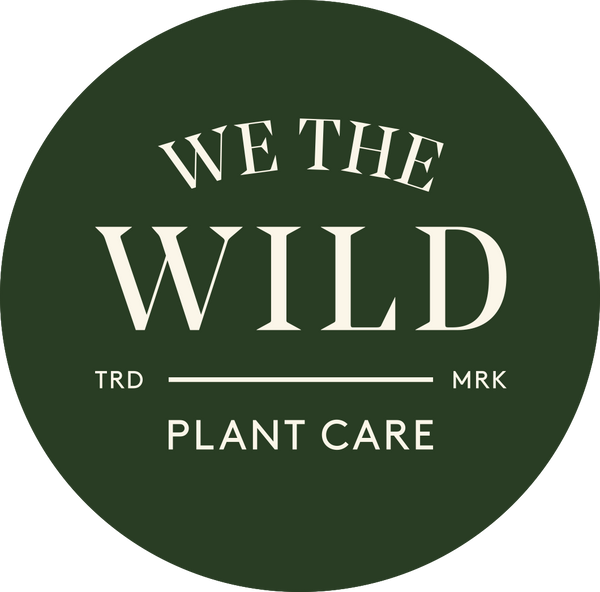Why do plants need fertilizer?
Once upon a time, the earth was made up of a complex mix of fertile soil. Nutrients from “the circle of life” (thanks Lion King) would absorb into the soil, making healthy and rich conditions for plants to photosynthesize and thrive. A complex array of major, secondary and micronutrients act as supplements to keep plants growing.
These days, while plants need the same levels of nutrients to grow, modernization means over 85% of our soil is nutrient-deficient (International Fertilizer Association). Whether it’s for fruit and vegetables in the garden, to houseplants in the living room, we use fertilizers to supplement or completely replace the nutrients previously provided by nature.
What is fertilizer made of?
The problem is (as with so many things humans have created), cheap fertilizers are often made up of synthetic chemicals and unsustainably mined minerals (some of which are not even able to be absorbed by a plant).
You’ll no doubt see the letters “NPK” on any bottle of fertilizer. It’s because there are three major nutrient structures required to keep plants healthy; nitrogen (N), phosphorus (P) and potassium (K).
Nitrogen: a pretty important component used by plants to form protein to then grow big and strong. Just like with Arnold Schwarzenegger, it makes powerful units you just want to eat!
Phosphorous: usually pulled from the earth using pretty harmful rock mining, phosphorous is the mouth of the plant-nutrient world. It helps plants break down all those nutrients into absorbable, bite-sized chunks AKA the building blocks of growth.
Potassium: often created by burning wood, or yanked from the ocean, ‘potash’ quite simply does loads of heavy lifting when it comes to the water management, disease resistance and strength of a plant.
This is just the start! There’s tonnes of other micronutrients that keep plants happy and healthy!
What types of fertilizers are there?
Well, it depends on how you classify a ‘type’ of fertilizer! Walking down the aisles of your garden centre can leave you dizzy with options. As we see it, there are two key groups.
Inorganic fertilizers: made using chemicals and often combined with synthetic or mined minerals, these generally just offer nutrients in their simplest form. These are the most common type for houseplants and home gardens, because they are cheap and easy to produce. Adding the wrong inorganic fertilizer to your plants can result in overfertilization and one unhappy plant parent!

Organic fertilizers: made using natural ingredients. Think decayed plant matter, animal manure and more. The problem is thatin Australia, products marketed as ‘organic’ fertilizers can still contain ‘natural’ ingredients like petroleum and up to 14% ammonium nitrate! While they contain a diverse range of nutrients and minerals, they do not assist the plant to actually absorb these nutrients.
Bio-fertilizers: these are the best kind! Just like we need beneficial bacteria to digest our food and keep ourselves fit and strong, so plants need a diverse range of bacteria and enzymes, combined with a wide range of nutrients. Not only are biofertilisers like We the Wild completely organic, they are also teaming with these good bacteria, trace elements and natural growth hormones.

What are the uses of fertilizer and how do I apply it?
Often, like drinking too much Pepsi or scoffing too many burgers, an overdose of the unnatural, chemically enhanced fertilizers found at the large hardware stores can harm plants. A an organic fertiliser like We the Wild is not only natural but can be safely used to defend against stress, increase growth and keep plants strong. There are 3 ways to use our fertilizers:
Soak: add a couple of drops to your watering can fortnightly - it’s like a fast action dose of goodness!
Spray: the cell walls of plant leaves are capable of absorbing nutrients, so spritz both sizes of your plant’s foliage to deliver nutrients directly to the canopy.
Sprinkle: for slow release support over a period of time, scatter some dry mix over the top of the soil and water in. Nutrients will gradually reach the root system as you water.
Is fertilizer toxic?
I started We the Wild when I turned over a bottle of fertilizer and nearly dropped the bottle! Not only could I pronounce less than 3 of the ingredients (petroleum was one of them by the way), but the labels jumped out at me. “WARNING”. “TOXIC”. “DO NOT SWALLOW”. Well, I understand the last one, but seriously?! Why are we feeding our herbs, fruit, vegetables, houseplants and outdoor plants with nasty chemicals?
That’s when I started researching all about the wonders of biofertilizer. It’s non-toxic, but I definitely wouldn’t recommend drinking it, because it’s teeming with bacteria that plants just LOVE, and humans...well, not so much. For us, it’s about harnessing the nature of nature to make caring for plants easier and more enjoyable. Grow on!



